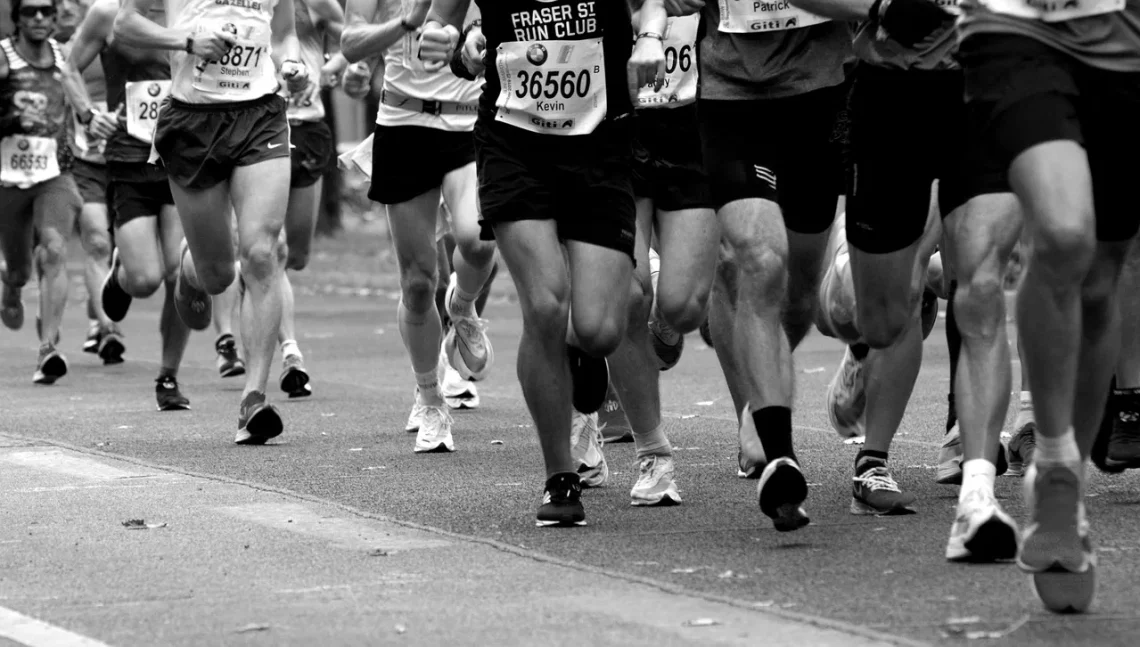
How Many Steps Are in a Marathon? A Detailed Breakdown
Running a marathon is a monumental achievement that goes beyond mere physical endurance; it represents a test of mental strength, dedication, and preparation. The allure of completing a 26.2-mile race draws thousands of participants each year, from seasoned athletes to first-time runners. While the focus often lies on the distance itself, many find themselves pondering the intricacies of what it takes to complete such a journey. Among the many questions that arise is one particularly intriguing: how many steps does it take to finish a marathon?
Understanding the number of steps involved in a marathon can be quite fascinating, as it varies based on several factors, including an individual’s height, stride length, running style, and overall fitness level. The concept of measuring a marathon in steps adds an additional layer of motivation for runners, as each footfall brings them closer to the finish line. This exploration not only highlights the physical demands of long-distance running, but it also serves to inspire those contemplating this challenging endeavor.
In this article, we will delve into the various aspects of step counts in marathons, examining the factors that influence these numbers and offering insights into how runners can better prepare for their races. Whether you’re a casual jogger or a competitive marathoner, understanding the mechanics behind your stride can enhance your performance and enrich your running experience.
Factors Influencing Step Count in a Marathon
When considering how many steps are taken during a marathon, it’s crucial to understand the various factors that influence this number. One of the most significant factors is an individual’s height and corresponding stride length. Taller runners typically have longer strides, which can result in fewer steps taken over the course of the race. Conversely, shorter individuals may take more steps due to their shorter stride lengths.
Stride length can also vary based on running speed. For example, a runner who maintains a slower pace may take shorter, more frequent steps, while a faster runner might have longer strides. This means that two runners of the same height can have different step counts based on their running speeds and styles.
Another factor influencing the number of steps taken in a marathon is terrain. Races held on flat surfaces may allow for a more consistent stride length and step count. However, when running on hilly or uneven terrain, runners may adjust their stride length and frequency to accommodate changes in elevation, which can lead to variations in overall step count.
Additionally, an individual’s running form plays a crucial role. Runners who maintain an efficient form tend to have a more effective stride, potentially reducing the number of steps needed to cover the marathon distance. Factors such as posture, foot strike, and overall biomechanics can impact how efficiently a runner covers ground.
Lastly, training and conditioning can also influence step count. Runners who have trained specifically for a marathon often develop a more consistent and efficient running style, which can lead to an optimized stride length and fewer steps. Therefore, understanding these factors is essential for runners looking to estimate their step counts and improve their performance.
Estimating Your Step Count
Estimating the number of steps you’ll take during a marathon can be beneficial for pacing and mental preparation. While the average step count for a marathon varies, a general estimate can be made based on stride length. The average stride length for a recreational runner typically ranges from 2.5 to 3.5 feet.
To calculate your estimated step count, you can use a simple formula: divide the total distance of the marathon, which is 26.2 miles, by your average stride length in miles. For instance, if your stride length is approximately 3 feet, you would convert that to miles (3 feet = 0.000568 miles) and then perform the calculation:
26.2 miles / 0.000568 miles = approximately 46,157 steps.
This formula provides a rough estimate and can vary significantly based on the previously discussed factors. Runners who want a more personalized estimate can take a few trial runs while measuring their stride length and average pace, allowing them to calculate a more accurate step count.
Using technology can also aid in tracking steps during training and races. Many fitness trackers and smartwatches have built-in pedometers that can provide real-time data on step count, distance, and pace. Utilizing these devices not only helps in estimating steps but also in monitoring overall performance and progress during training.
By understanding your stride and employing technology, you can gain valuable insights into your running habits, allowing for better race day strategies and preparation. This knowledge can also help in setting realistic goals and managing expectations during training, ultimately making your marathon experience more enjoyable and rewarding.
Training Tips for Marathon Runners
Training effectively for a marathon is crucial for achieving your performance goals, and understanding your step count can play a role in your training strategy. Here are several tips to enhance your marathon preparation:
1. **Establish a Training Plan**: A structured training plan tailored to your experience level can help you build endurance and improve your pace. This plan should include long runs, tempo runs, and recovery days to develop your fitness progressively.
2. **Focus on Form**: Pay attention to your running form, as proper biomechanics can lead to a more efficient stride. Consider working with a coach or experienced runner to analyze your form and make necessary corrections.
3. **Incorporate Strength Training**: Building strength, particularly in your core and legs, can improve your overall running efficiency. Strength workouts can help with maintaining form over long distances and reducing the risk of injuries.
4. **Practice Pacing**: During your training runs, practice maintaining a consistent pace that aligns with your goal marathon time. Understanding your step count can help you gauge your pacing strategy, ensuring you don’t start too fast or slow.
5. **Utilize Technology**: As mentioned earlier, using fitness trackers to monitor your runs can provide valuable data regarding your step count, pace, and distance. Analyzing this data can help identify trends and areas for improvement.
6. **Listen to Your Body**: As you prepare for the marathon, it’s essential to pay attention to how your body feels. Rest and recovery are just as important as training, so don’t hesitate to take a break if you’re feeling fatigued or experiencing pain.
By implementing these training tips and understanding your unique step count, you can enhance your performance and make your marathon experience both successful and enjoyable.
**Disclaimer**: This article is not intended as medical advice. If you have health concerns, please consult a healthcare professional.




